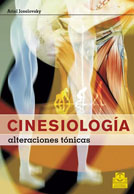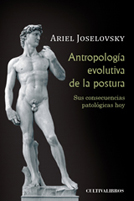 VERTIGO AND SICKNESS
VERTIGO AND SICKNESS
VERTIGO AND SICKNESS
The number of patients complaining of vertigo and sickness has been amezingly increasing during the last years. In fact, we should not be surprised, if we take into account that this increase takes place basically at big cities. Although there exisit no valid statistics, this growth is related to the stress felt at cement cities. At the beginning, the patient resists to express his feelings; when he finally dares to do so, he receives the solidarity from the people around him, but when this situation extends in time, he will inmediately notice annoyance and unbelief in those who at first supported him. As a consequence, the patient begins to retreat and the loneliness of his problem becomes part of the pathology. We must always bear in mind that emotions are the main cause (I will detail this topic later on), therefore, the patient´s loneliness in only a prt of the problem, since it is difficult to find the correct diagnosis. In general, visits to different specialists and sophisticated studies are almost endless, specially when everything seems to be right, and there is no visible pathology. This leads the patient to unbelief, and lack of confidence in his own judgment, for he says he does not even understand his own body and longer.
Obviously, anxiety increases. In fact, patients suffering from vertigo are characteized by an anxious personality that reaches its maximum expression in the presence of sickness. In an attempt to join biological and psychological concepts, we way say that symptoms as vertigo and sickness never translate a physical sensation so similar to the very emotional situation that is being lived. Generally, the patient is going through a stage of significant emotional changes. For instance: a wedding, the loss of his job, the birth of a baby, the completion of studies and the beginning of a professional carreer, etc. The unsteadiness of the new situation is concretely transformed into a physical unsteadiness that the body expresses through sickness. This would be a very theorical explanation, if we did not sustain it with the underlying biological process. When we talk about “not losing one´s head” in case of an unknown emotional situation, we are referring precisely to neck muscles which are responsible for maintaining the balance of the head. Our main sources of communication to the external world are located in the head: sight and ears.
Neck muscles are the only muscles throughout the whole body that have a double connection to the regulating system of balance. All other muscles have a simple connection. In general, this regulating system of balance uses information form body muscles to process it with the rest of the information coming from the ears and the sight, thus establishing in this way the location of the body within space.
The double system of connection of cervical muscles emphasyzes their importance in the reguation of balance, as a sort of biological preponderance; when a person feels emotionally anxious, he tends to contract the muscles that join the head with shoulders, tensing the whole msculature that runs from the neck up to the highest portion of the shoulders. This is a clear aggressive atittude (similar to the atittude exhibited by some animals when they bristle the hair at their back to aggressively, intimidate their possible rival), which is, of course, restrained in modern man. This gesture that we make by bringing the shoulders near the head, and tensing the neck, is a bad habit that copies the gesture made by primitive man during hunting. In those days, the tension of the shoulders and neck operated to give support to his powerful mandible, which was much more developed than our present mandible, and constituted his main weapon.
It has been proved that the ancestral memory of the phylogenetic history is kept inside the most primitive portion of our brain, known as the limbic lobe. Certainly, today the reasons for biting are different, but, luckily, biting is no longer practiced amongst adults, and has been supressed, of course whith much more tension at the critical area. But among children, who have not been yet reached by social education, it is common to observe these bites which may be expressed in the form of a game or anger.
Nowadays, we can take for granted that all men or women living at modern cities will complain several times a week of cervical tension, and we all know the degree of aggressiveness that is felt at highly populated metropolis. This excessive cervical tension is transformed into an unceasing electric flow driven through the nerves. In the case of cervical muscles, as there is a double system of nervous connection to the body balance regulating system, said muscles will obtain so much information that the correcting signals will be translated into wrong sensations, thus causing vertigo and sickness. This situation will be later intensified by the pressure that cervical muscles exert on the neck, on the arteries that run towards the brain, mainly the vertebral arteries located at the neck area, which are responsible for 40% of the total irrigation of the brain, but which are essentially the ones that irrigate all the elements that participate in the regulation of balance. When blood irrigation or flow are diminished, the symptomatology of vertigo and sickness is accompanied by uncomfortable buzzings and a reduction of the auditive capacity.
It is true that cervical pain, which is another signal that generally appears in these situations, is added to the symptomatology previously described, but, it may also be absent, without invalidating the existence of sickness. There can be cervical tension without pain but with dizziness. This condition of anxiety-tension-dizziness-anxiety constitutes a vicious circle that is hard to eliminate. The patient starts to coexist with this circle, chronically bearing this situation sometimes for many years; and his life becomes to be restricted, specially as to the social aspect, since generally undergoes through true panic strokes when an episode takes place in public (this is very common). The patient refers to situations in which he thought he was about to lose consciousness, or in his own words: “I felt i was going to faint”. Shopping malls or supermarkets are the most common places, since these spaces offer excessive sensorial stimulus like, for instance, lights, sounds and a very high degree of human traffic towards different directions which produces a true sensorial irritation. The patient first feels that he is disorientated, then he becomes stunned, with a sensation of unsteadiness; he begins to become virtually phobic, causing a release of adrenalin that produces sudation, palpitation, choking and increase of respiratory rate which ends in an unbearable sensation of claustrophobia. If he does not move out of the place, he will undoubltely enter in panic. Paralelly, he first feels that his body becomes very tense, feeling afterwards a sensation of looseness and faint, which paradoxically almost never occurs. Airports and cinemas are other places where this kind of events may take place. It is important to explain to the one who suffers this type of symptoms, that the tension of cervical muscles, through mechanisms of sensorial confusion and temporary blood hypoflow, produces sickness, but that those symptoms similar to dismays, which are characterized by looseness and sensation of choking, are secondarily originated by the fear and insecurity generated by the sudden appearance of sickness. At that moment, a strong release of adrenalin occurs. The adrenalin is a substance segregated by suprarenal glands, that produces sudoration, palpitations and increase in respiratory rate, preparing the body for a state of alert or high stress. Immediately, the release of another hormone known as norepinephrine takes place. The noradrenalin or norepinephrine is segregated by the same gland, but with an opposite effect; it is vasodilatating, and tends to reduce all the tension previously generated, thus producing a sensation of looseness or faint. The subsequent discomfort, i.e. the sensation of faint, confuses diagnosis, since the person, by now frightened, carries out a medical consultation, on the basis of dismays or hypotension occuring several times within a very short time. When the patient begins to fear, he tends to remanin at home, and prefers to stay in bed all the time, because he considers it to be safe place. If he goes out, he generally does so with someone else, nevertheless, he still feel frightened. This is more common than what we think, but is not very much known, since the patient and the family generally hide this painful situation. Usually, depression immediately accompanies this symptomatology, and at this point, the true and deep emotional symptoms, which have been generating so much anxiety, start to come to surface. When depression becomes more intense, the patient feels his body cannot answer with enough energy any longer. There exists a virtual disconnection between intentions and the body; therefore, the patient becomes more worried, since he cannot comply with his labor and domestic obligations. Psychological assistance is essential to overcome this condition.
From the kinesic viewpoint, the solution at the musculofacial level is primarily based on the reduction of muscular tension, and then on the cleansing of the fibrous tissue produced between muscles, and eventually, on the alignment of cervical spine axes, and of said cervical spine in respect to the rest of the body segments. Generally, the selective manual elongation technique produces important results within the first three weeks, with a strong reduction of the symptomatology.
We all know that one eye prevails over the other; this means that one eye focuses while the other accommodates, but when this is difficult, there appears a pathology known as astigmatism. Concretely, astigmatism is a problem of visual accommodation in front of a certain point within the visual field. It is very common for the patient with sickness to suffer from astigmatism prior to the appearance of symptoms. We must bear in mind that cervical muscles, in order to vertically accommodate the head, need the sight to have a horizontal plane parallel to the floor as a point of reference. Therefore, any alteration in the visual field, mainly in accommodation, will be compensated with adjustments of neck muscles. Of course, we should not expect all patients with sickness to necessarily suffer problems of visual accommodation, but we should take this into account.
Another element to be considered from the biological viewpoint, is that muscular tension is increased when we feel cold and specially, during the first cold days of the year, when the body is not yet adapted to low temperatures. Although these circumstances produce an increase of the symptomatology, it is impossible that they cause vertigo by themselves.
The above mentioned lines attempt to give a biological and psychological explanation, but we must still accommodate all this symptomatology within the social context we were referring to at the beginning of this chapter.
From the viewpoint of cultural transference, the idea of bending the head means humiliation or humbleness, while the idea of raising it communicates dignity. All religions suggest to lower the head in the presence of God, as a proof of humbleness, thus recognizing him as a superior being. Since power exists amongst men, the bending of the head in the presence of the powerful person has been a sign of domination an humiliation; by opposition, to hold the head steady and upright, like soldiers do, is a sign of dignity. “Hiding the head” or “holding the forehead upright” are two concepts that have always been clear and in force ever since.
Popular culture has given cervical muscles, mainly neck muscles, extra work, but without any intention. Nowadays, where individualism prevails, a rigid neck is a symbol of success, no matter the pain it causes, and a bended head an expression of failure. Of course, this is not casual; the first muscles we learn to move willfully are precisely the neck muscles, and this generally takes place within the first three months of life. When adults, the neck muscles are still responsible for showing our will to society.
Vertigo and sickness are defined as subjetive sensations through which the person feels that objets are moving, though being aware that this is not happening; therefore, it is a problem of perception. Pecisely, perception is an intermediate step between sensations and thought and, as we have already seen, there are many elements which may influence on this intermediate step. Discomfort exists, always form the subjectivity, but in a concrete form. We should act to eliminate it in the same way.
Characteristics of vertigo episodes
Level 1:
Strong feeling of unsteadiness lasting just a few seconds. It is originated by a strong emotion or a sudden change of the position of the head. It is referred to with phrases like: “I felt the floor moving”, “I felt my head was being moved”.
Level 2:
Sensation of unsteadiness lasting almost one minute, followed by sudoration and palpitations, due to a strong release of adrenalin ( as a result of the shock and not of the cervical tension that originated the sickness). It usually takes place at highly visited places (shoppings and supermarkets). It disappears by moving out from said places. It leaves an unpleasant sensation similar to a hypotension.
Level 3:
Almost permanent unsteadiness. It only disappears while in bed. There is a stunned state and a feeling of great fear. The patient says he “feels like walking on cutton” or that he “feels like being on the clouds”. He perceives his surroundings with a strong sensation of irreality, by opposition to the fact that he never loses consciousness or logic.
Level 4:
The patient is in a permanent state of anxiety. He has alredy learn to coexist with these episodes. He feels that his cervical contracture is not enough reason to justify these episodes. This confusion misleads treatment, and the condition becomes chronic. There are patients who coexist with said condition for several years, with certain periods of calmness.
| < Prev | Próximo > |
|---|









